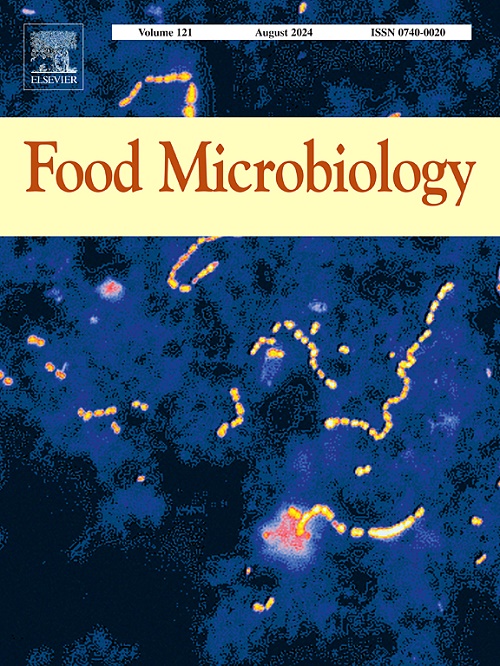细胞壁完整性通路调控南极真菌Geomyces wnf-18c的红色素分泌
IF 4.6
1区 农林科学
Q1 BIOTECHNOLOGY & APPLIED MICROBIOLOGY
引用次数: 0
摘要
天然色素安全性高,广泛应用于食品、化妆品、医药等领域。然而,目前天然色素的来源极其稀少,特别是来自微生物的色素。在这项研究中,我们从极地土壤样品中分离出一种真菌,产生紫红色色素,安全无毒。更重要的是,这种颜料的颜色与高端颜料卡明酸非常相似,因此这种颜料具有替代卡明酸的潜力。此外,通过ARTP (Atmospheric and Room Temperature Plasma, ARTP)诱变获得了一株高产红色素菌株,并对高产红色素的分子机制进行了探讨。我们发现细胞壁完整性(cell wall integrity, CWI)在这种红色色素的分泌中起着至关重要的作用,并鉴定了rho1和bck1在这种真菌中的作用,这两个基因是CWI通路的关键基因。rho1或bck1的缺失显著促进了红色素的分泌。Δrho1和Δbck1菌株的细胞壁成分含量和甲壳素、β-1,3-葡聚糖等相关基因的转录均明显降低,细胞壁应激反应也受到显著影响。更值得注意的是,几丁质合成酶CHS3的过表达阻碍了色素的分泌,这进一步证实了细胞壁完整性在色素分泌中的作用。本研究揭示了极地微生物CWI通路与色素分泌的关系,对极地微生物资源的开发利用具有重要意义。本文章由计算机程序翻译,如有差异,请以英文原文为准。
Cell wall integrity pathway regulates red pigment secretion in Antarctic fungi Geomyces wnf-18c
Natural pigments have high safety and are widely used in food, cosmetics and medicine. However, at present, sources of natural pigments are extremely scarce, especially those from microorganisms. In this study, we isolated a fungus from a polar soil sample that produces purplish-red pigment and is safe and non-toxic. More importantly, the color of this pigment is very similar to the high-end pigment carminic acid, so this pigment has the potential to replace carminic acid. Besides, we obtained a strain with high yield of red pigment by ARTP (Atmospheric and Room Temperature Plasma, ARTP) mutagenesis, and explored the molecular mechanisms of high yield of red pigment. We found that the cell wall integrity (CWI) plays a critical role in the secretion of this red pigment, and identified the function of rho1 and bck1 in this fungus, which are critical genes in CWI pathway. The deletion of rho1 or bck1 significantly promote the secretion of red pigment. The Δrho1 and Δbck1 strains exhibited reduced contents of cell wall components and transcription of related genes, such as chitin and β-1,3-glucan, and the cell wall stress response was also significantly affected in these two strains. What is more noteworthy is that the overexpression of chitin synthase CHS3 hinders pigment secretion, which further confirms the role of cell wall integrity in pigment secretion. Our findings revealed the relationship of CWI pathway and pigment secretion in polar microorganism, which is of great significance for the exploitation and utilization of polar microbial resources.
求助全文
通过发布文献求助,成功后即可免费获取论文全文。
去求助
来源期刊

Food microbiology
工程技术-生物工程与应用微生物
CiteScore
11.30
自引率
3.80%
发文量
179
审稿时长
44 days
期刊介绍:
Food Microbiology publishes original research articles, short communications, review papers, letters, news items and book reviews dealing with all aspects of the microbiology of foods. The editors aim to publish manuscripts of the highest quality which are both relevant and applicable to the broad field covered by the journal. Studies must be novel, have a clear connection to food microbiology, and be of general interest to the international community of food microbiologists. The editors make every effort to ensure rapid and fair reviews, resulting in timely publication of accepted manuscripts.
 求助内容:
求助内容: 应助结果提醒方式:
应助结果提醒方式:


